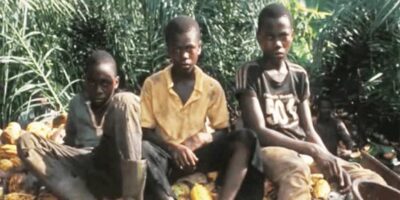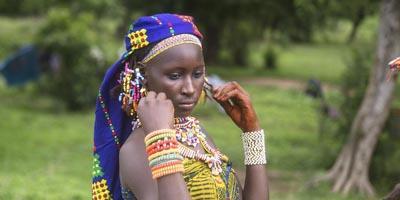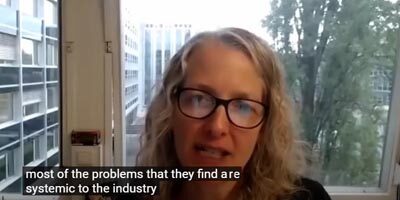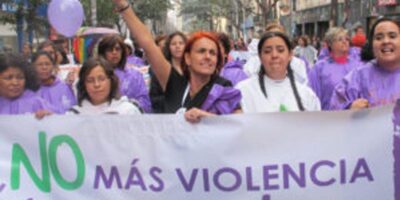
The ancient city of Bagan, with more than 2000 pagodas and temples.. Photo: Jose Javier Martin Espartosa
For the tourist, Burma is a country of contradictions. The southeast Asian country boasts cultural sites and sandy beaches that rival any tourist paradise in the region. But according to some democracy activists, the very functioning of the tourism industry is bound up with gross human rights abuses committed by the military regime that has ruled the country since 1988.
The untouched scenery and friendly locals have made Burma an attractive tourist destination, and so commercial tourism has been promoted despite calls for a boycott. Asian travel agents have long promoted cheap tours to Burma, and now European and American travel agents are also establishing tourist operations in the country.
Lonely Planet founder Tony Wheeler has been a vocal proponent of Burma as a cheap and beautiful holiday destination.
The Burmese military regime exploited the most vulnerable members of society to develop its tourism industry. Political prisoners were used to clear the moat surrounding the historical Mandalay palace and thousands were forcibly relocated from Bagan city in 1996, when the military regime launched a “Visit Myanmar” year of tourism promotion. For heavily indebted countries like Burma, tourist dollars can become a significant source of income.
While forced labor and relocations are now less common in central Burma, which attracts the majority of the country’s tourists, the practice continues in outlying areas.
“It is still a big problem in the minority states. Right now they are launching a horrific assault against the Karen people. We have also heard reports of small-scale forced labour, particularly on infrastructure like roads” said Mark Farmaner, director of the Burma Campaign UK, an NGO that aims to restore human rights and democracy in Burma on behalf of the Burmese pro-democracy movement.
The National League for Democracy (NLD) in Burma publically asks tourists not to visit, arguing that nowhere else in the world have human rights abuse and tourism been so closely linked. In 1990, the NLD won more than 80 percent of the seats in parliament but was prevented from forming an operational government by the military junta.
Farmaner staunchly supports the NLD’s pleas to boycott tourism to Burma.
“Tourism development has been directly linked with human rights abuses, and you are helping to fund the dictatorship. Yes, a tiny amount of what you spend in Burma might benefit a local people to a small degree, but you’ll be helping to fund the military, and that military is engaged in wars with ethnic minorities.”
The Free Burma Coalition, a Burmese-led group founded in Wisconsin, argues that sanctions do little to affect political change in Burma. Dr. Maung Zarni, the group’s founder, has said that engagement through tourism could even have a positive effect on the country by drawing Burma out of its isolation. Provided that tourists avoid businesses that are owned by the military, tourism would be beneficial in providing employment and revenue to locals. Few other sources of revenue exist.
Derek Tonkin, the former British ambassador to Vietnam, Thailand and Laos also disagrees with the calls to boycott tourism in Burma.
“I think that in principle tourism can be a good thing, because I think development of contact between people is important,” said Tonkin, chairman of Network Myanmar, a group with the stated aims of promoting reconciliation in Burma, working to reduce the country’s isolation, and advocating for the civil and political liberties of its people.

Myanmar Buddhist monks gather in the streets in the vicinity of Shwedagon pagoda in Yangon, Myanmar, on 24 September 2007, the seventh day of peaceful rebellion against the country’s military regime. Photo by “Racoles.”
Tonkin argues that tourist dollars represent a negligible source of funding for the military regime. “You don’t go there to convert people, but you do go there to see what is happening, and when you come out of the country, you can tell people what you’ve seen.”
However, Farmaner insists “Change will only come if the international pressure on the regime is maintained, and the tourism boycott is part of a short-term strategy to ensure long-term prosperity, security and freedom for all of the peoples of Burma.”
Oil money
The French oil and gas company Total is the principal stakeholder in a consortium including Chevron (US), PTT Exploration and Production (Thailand), and MOGE operating the Yadana (“treasure”) gas pipeline that transports natural gas from Burma to neighboring Thailand. The project is currently one of the single largest sources of revenue for the Burmese authorities.
In 2009 Total disclosed that its portion of the Yadana natural gas project generated US$254 million for Burmese authorities in 2008.
Total defends its investment
“Countries own their natural resources. Under the terms of the applicable production sharing contract, the government grants companies a share of the profit from the production operated by the consortium.
As a foreign company, we have no say on the state budget, although we hope that the revenue will benefit the people of Myanmar as effectively as possible.
We promote financial transparency in our operations worldwide, as our active participation in the Extractive Industries Transparency Initiative demonstrates. Under the terms of our production sharing contract, the government of Myanmar receives its share of the profit from the sale of the natural gas, as well as income and other taxes paid by each consortium member.” – from a Sept. 2009 statement
Burma’s Miltary regime
Since it seized power in 1988, the military regime that rules Burma has been accused of recruiting child soldiers, political imprisonment, and forced relocation and labor. The current number of political prisoners is at its highest level since the 8888 uprising when the army opened fire on student-led pro-democracy advocates in 1988. In 2007, the military also crushed dissent by opening fire on students and monks alike. When Cyclone Nargis devastated the Irrawaddy Delta in 2009, the government’s obstruction of international relief efforts resulted in deaths of an estimated 100,000 people.
The 8888 Uprising
On August 8, 1988, thousands of protestors staged a series of marches, demonstrations, and riots in Burma. Students in Rangoon initiated the uprising, which quickly spread throughout the country as monks, young children, housewives and doctors demonstrated against the regime. The Burmese Junta violently ended the uprising on September 18. Thousands of deaths have been attributed to the military during this uprising.
The Saffron Revolution
The Saffron Revolution was a series of anti-government protests on August 15, 2007. Led by students and opposition political activists, the protest demonstrations were dealt with quickly and harshly by the junta, with dozens of protestors arrested and detained. Starting September 18, the protests had been led by thousands of Buddhist monks and those protests were allowed to proceed until a renewed government crackdown on September 26. The protests have been called the saffron revolution after the color of the monks’ robes.
Myanmar or Burma?
In the Burmese language, there have been controversies about the name of the country since the 1930s, and the decision of the military regime in 1989 carried the controversy into the English language. The state is officially known as the “Union of Myanmar”. The military believes that the use of “Myanmar” is more inclusive of minorities than “Burma”, while opposition parties argue that the name “Myanmar” is a purely Burmese name reflecting the policy of domination of the ethnic Burman majority over minorities.






